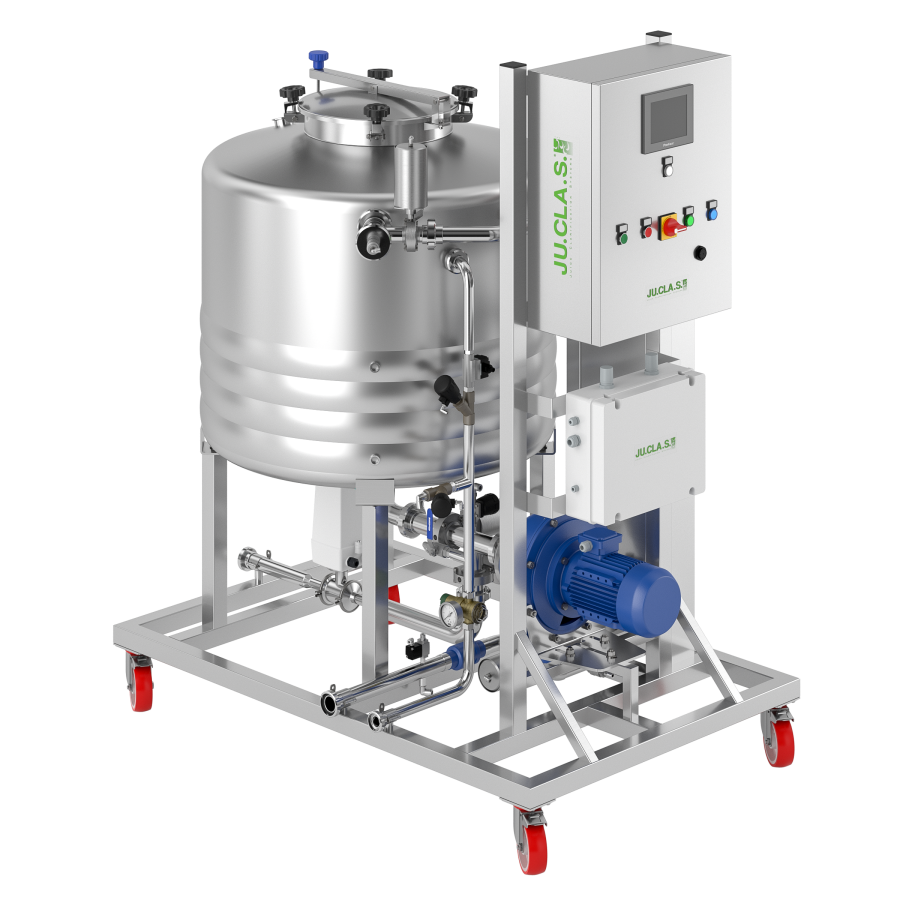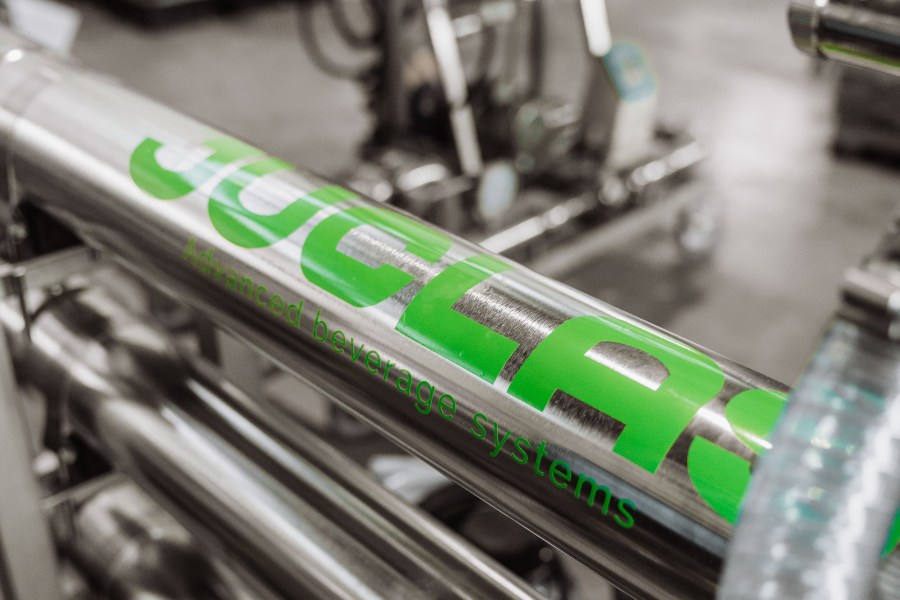With over 30 years of experience in the winemaking sector, JUCLAS specialises in the production of technologies applied to winemaking. The applications of these technologies cover various stages of the process: must flotation, microfiltration, cross-flow filtration, gas management in wines, are just a few of Juclas’ specialisations.
In this article, Juclas want to highlight the effectiveness of the yeast rehydration technology, EASYFERM®.
In the winemaking industry, the quality of fermentation is crucial to the final product, and yeast plays a vital role in this process. EASYFERM® is a cutting-edge automatic system designed specifically to optimise yeast rehydration and preconditioning, ensuring high-quality fermentation. Here is an overview of its importance and benefits.
Why use EASYFERM®?
EASYFERM® ensures that yeast cells are rehydrated under optimal conditions, increasing their vitality and viability. This process is especially important for preventing fermentation interruptions and achieving consistent results across batches. It can be used both for yeast rehydration in standard fermentations and for preparing Pied de Cuvée (PDC) for secondary fermentation. In this article, Juclas want to emphasise the importance of using EASYFERM® in the preparation of PDC.
The role of yeast in sparkling wine
Proper yeast rehydration and conditioning are crucial to ensuring a smooth, complete secondary fermentation, and this is where EASYFERM® excels. Yeast performance during this stage is essential for generating the necessary carbonation and developing the wine’s flavour profile.
Key benefits
- Optimised rehydration for secondary fermentation: Sparkling wine yeast faces additional challenges compared to primary fermentation, such as higher alcohol levels, pressure, and nutrient-deprived conditions. The EASYFERM® system ensures that yeast is properly rehydrated and conditioned to withstand these challenges, reducing the risk of sluggish or incomplete secondary fermentation.
- PDC function: EASYFERM® includes a “pied de cuvée” feature, which helps acclimatize rehydrated yeast cells to the harsh conditions of secondary fermentation. This function, dedicated to sparkling wine production, can be fully managed through EASYFERM®‘s automation capabilities.
- Prevention of fermentation interruptions: EASYFERM® minimises the risk of fermentation interruptions by ensuring that yeast cells are healthy and ready for the fermentation environment. This leads to more consistent CO2 production and better control over the effervescence of the final product.
- Automation and consistency: The automated nature of EASYFERM® ensures consistency in yeast rehydration and preconditioning across batches. This makes it ideal for wineries looking to scale production without compromising on quality. It reduces manual labour and eliminates variations in yeast handling, which can otherwise affect the outcome of sparkling wines.
- Clean fermentation: Proper yeast rehydration and acclimatisation result in a cleaner fermentation process with fewer off-flavours, allowing for a clearer expression of the yeast’s properties.
What does EASYFERM® do?
- Yeast rehydration
- Temperature control
- Aeration and agitation
- Inoculation
- Monitoring critical parameters such as temperature, time, oxygen dosage, nutrients, and sugar dosage.
EASYFERM® is available in several models with capacities ranging from 8kg to 40kg of rehydratable yeast.
Conclusion
EASYFERM® is a valuable tool for sparkling wine producers looking to optimise yeast health and improve fermentation outcomes. By automating the yeast rehydration process and offering specialised features like “pied de cuvée,” EASYFERM® addresses the unique challenges of sparkling wine fermentation, ensuring consistent quality, better carbonation, and reduced risk of fermentation interruptions. EASYFERM® is an excellent choice for those seeking to enhance the reliability, efficiency, and quality of their fermentation processes while saving on labour and resources.

For more like this, sign up for the FREE Vineyard newsletter here and receive all the latest viticulture news, reviews and insight




